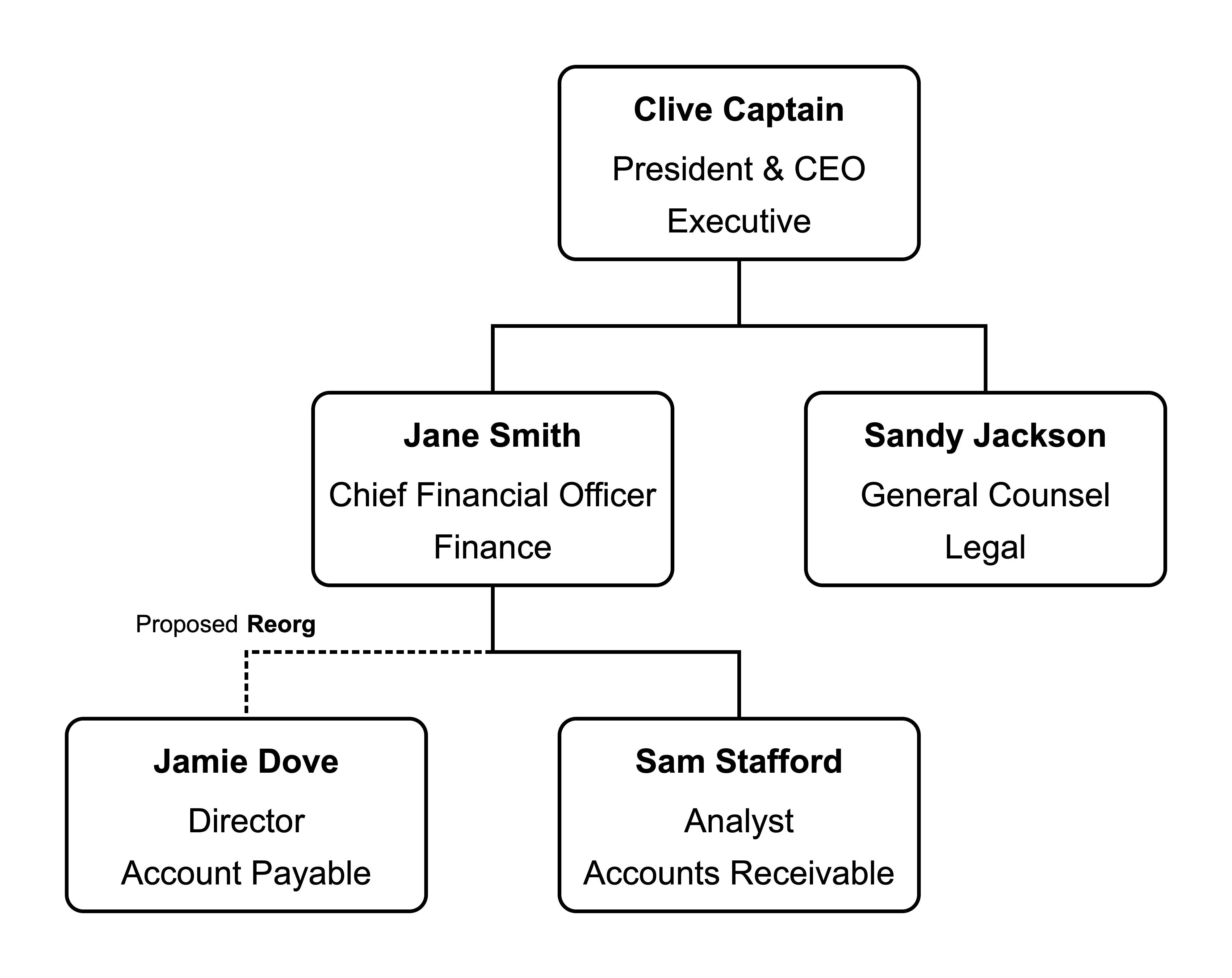Flexible Organization Chart Templates for Every Business

Welcome to the world of organization charts! Have you ever struggled to understand the hierarchy and reporting lines within your company? This article introduces you to flexible organization chart templates that make it easy to visualize your company's structure and find the perfect fit for your unique business needs.
Getting Started with Organization Chart Templates
The importance of visualizing company structure
Having a clear visualization of your company's structure is crucial for fostering a healthy work environment. A well-designed org chart helps employees understand their roles, responsibilities, and relationships with their colleagues. This clarity enhances communication, boosts collaboration, and contributes to overall efficiency.
Overview of flexible organization chart templates
Flexible org chart templates are designed to cater to businesses of all types, ensuring that you can find the perfect match for your company's structure. These templates can be easily adapted to suit your specific needs, making it a breeze to create a visually appealing and functional representation of your organization. So, whether you're a small startup or a large enterprise, you can find the right template to bring your company structure to life.

Benefits of Flexible Organization Chart Templates
Adaptability to various business structures
Flexible org chart templates are designed to accommodate different types of organizational structures, whether it's a hierarchical, matrix, or flat structure. This adaptability ensures that you can find the right template for your company's unique needs.
Ease of use for team members at all levels
Most org chart software and templates are user-friendly, allowing team members at all levels to easily understand the company's structure, navigate through departments, and identify key personnel. This simplicity promotes a sense of unity and cohesion within the organization.
Promotes clear communication and understanding of roles
A well-designed org chart built using flexible templates can help eliminate confusion and misunderstandings about reporting lines and responsibilities. By providing a visual representation of the company's structure, employees can easily grasp their roles and those of their colleagues, fostering better collaboration and communication.
Facilitates better decision-making and resource allocation
With a clear visualization of the organization's structure, managers and executives can make more informed decisions about resource allocation, workforce planning, and project assignments. The insights gained from a flexible org chart template can also help identify potential areas for improvement or restructuring, ultimately driving company growth and success.
Types of Organization Chart Templates

Hierarchical
Hierarchical org charts are the most common type and display the organization's structure in a top-down approach, with the highest-ranking individual at the top and subordinates branching out below. These templates help visualize clear lines of authority and make it easy to identify the chain of command.
Matrix
Matrix org chart templates represent organizations with dual reporting relationships, where employees report to more than one supervisor or manager. These templates are particularly useful for companies that work on multiple projects simultaneously or have cross-functional teams.
Flat
Flat org chart templates are ideal for organizations with minimal hierarchy and few management layers. In these structures, decision-making authority is often distributed more evenly among team members, promoting collaboration and a sense of autonomy.
Cross-functional
Cross-functional org chart templates showcase teams composed of members from different departments working together on specific projects or initiatives. These templates help visualize the relationships between team members and their respective home departments, fostering better communication and collaboration.
Divisional
Divisional org chart templates are perfect for organizations with multiple divisions, subsidiaries, or business units, each with its own distinct hierarchy. These templates help visualize the relationships between divisions and the larger corporate structure, providing a comprehensive view of the organization.
Customization Features in Org Chart Templates
Consistent and minimal design changes are most effective in communicating. Create variations of an org chart to highlight specific ideas or changes.

Labels and data
Incorporate labels and data to provide important information about elements on the chart. Using clear and explicit wording to describe data is far superior to relying on symbols or shapes. Detailed labels help team members quickly understand the roles, relationships, and responsibilities within the organization.
Color
Use color to emphasize the grouping of similar elements, such as departments, teams, or management levels. By strategically applying color, you can create a visually appealing org chart that also enhances understanding of the company's structure. For instance, use different colors for different departments, or shade management levels to distinguish their authority.
Line style
Employ dotted, dashed, or solid lines to indicate the status of connections and relationships within the org chart.
- Solid lines represent permanent connections, such as direct reporting lines.
- Dashed lines usually signify secondary relationships, like dotted lines between team members in a matrix structure.
- Dotted lines can be used to highlight proposed or pending relationships, such as new hires or upcoming reorganizations.
Selecting the Right Template for Your Business
Evaluating your organization's structure
Before choosing an org chart template, it's essential to evaluate your organization's structure. Determine whether it's hierarchical, matrix, flat, cross-functional, or divisional. By understanding the unique aspects of your company's structure, you can select a template that accurately represents it.
Identifying key roles and responsibilities
Identify the key roles and responsibilities within your organization to ensure that your org chart clearly communicates the relationships between team members. This step will help you determine the level of detail required in your template and whether additional customization features, such as labels or color-coding, are necessary for better clarity.
Aligning the template with your company culture and values
Choose an org chart template that aligns with your company culture and values. For instance, if your organization promotes collaboration and open communication, a flat or matrix org chart template may be more suitable than a traditional hierarchical template. The visual representation of your company's structure should reflect its overall ethos and approach to teamwork.
Implementing Flexible Organization Chart Templates
Importing existing employee data
To streamline the process of creating your org chart, a few software solutions, like Lexchart allow you to import existing employee data from HR systems, spreadsheets, or other data sources. This feature automates the chart generation process, saving time and effort while ensuring that the org chart accurately reflects your company's structure.
Be sure to choose a template that supports data import.
Ensuring data accuracy and consistency
Maintaining data accuracy and consistency is crucial for an effective org chart. Regularly update your chart to reflect any changes in your organization, such as new hires, departures, or role changes.
Establish a process for keeping the org chart current, and consider using software that can automate updates based on changes in your HR system or other data sources. This will help ensure that your org chart remains a reliable source of information for your team.
Promoting engagement and feedback from team members
An org chart is not only a visual representation of your company's structure but also a tool for promoting engagement and collaboration among team members.
Encourage employees to provide feedback on the org chart's design, usability, and accuracy. This input can help identify areas for improvement and ensure that the chart remains relevant and valuable for everyone in the organization.
Conclusion
An organization chart is a powerful tool for visualizing your company's structure and fostering clear communication and collaboration among team members. By implementing a flexible org chart template that suits your unique business needs, you can create an accurate, easy-to-understand, and visually appealing representation of your organization.
In this article, we discussed the benefits of flexible org chart templates, explored various types of org charts, and highlighted customization features that can enhance your chart's effectiveness. We also shared insights on selecting the right template for your business and provided tips for implementing and maintaining an org chart that remains relevant and valuable for your entire team.
Now that you're equipped with the knowledge and tools to create the perfect org chart for your business, it's time to dive in and start visualizing your company structure. With the right template and a commitment to maintaining accuracy and consistency, your org chart will become an essential resource for communication, collaboration, and growth.
This chart is made with Lexchart for automatic organization charts.


